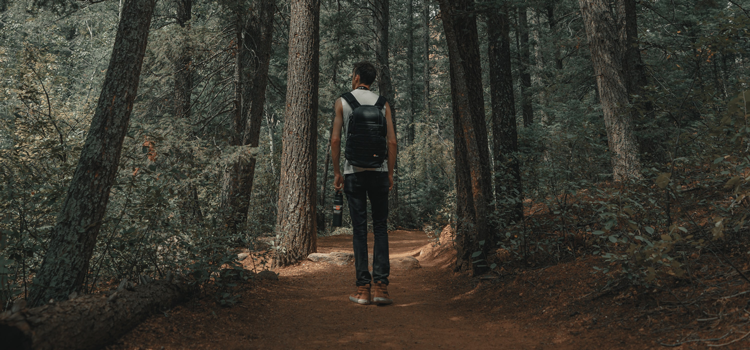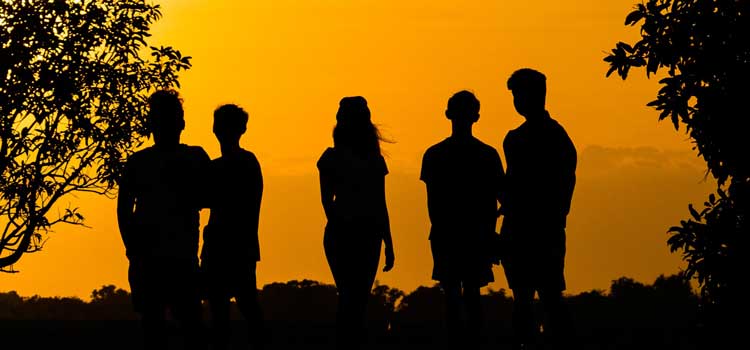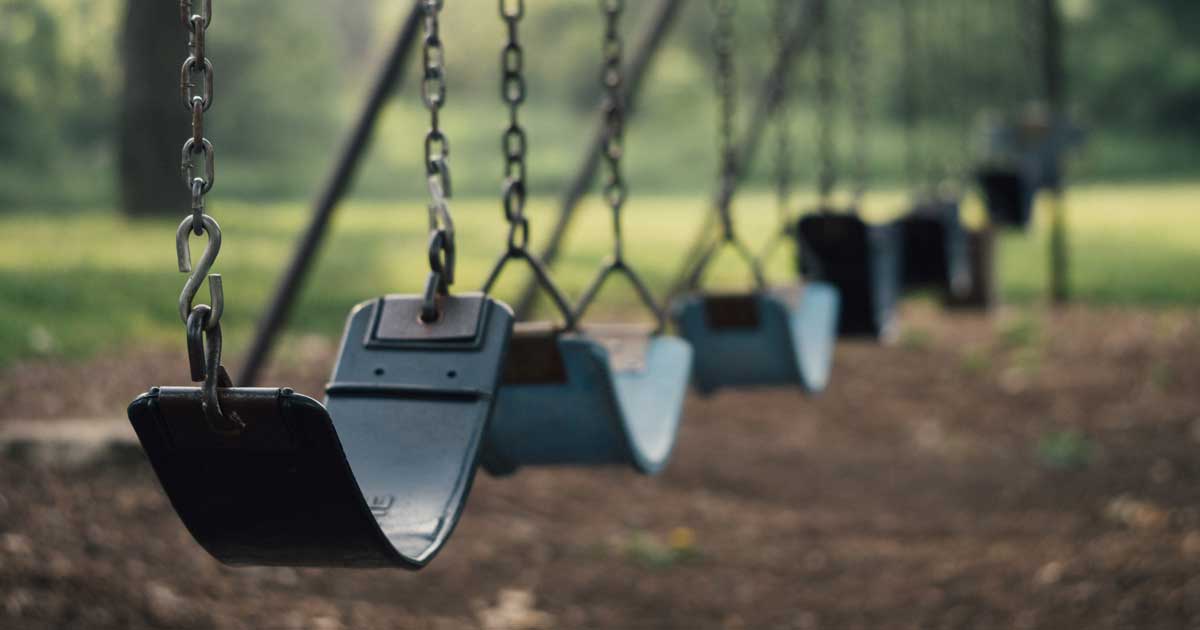As members of the BIPOC community who work as camp counselors during the summer, we have seen and felt firsthand how deeply woven and inherent racial disparities are in our society. We have also come to recognize that there is no system or organization that is immune to these disparities—not even summer camp. We know that race and privilege at summer camp need to be addressed.
Our three-part blog series covers six steps that will give you ideas and tools to help you initiate conversations with your staff about race and privilege at summer camp. We also offer tips that will help you confidently follow through with actions.
The six steps are:
- Acknowledge that racism exists within your organization
- Adjust your mission statement
- Involve your staff members now
- Create a common level of knowledge
- Make a list of action steps
- Continuously evaluate
We work at a camp that focuses on creating an emotionally and physically safe environment for campers, which is something we believe all camps aim to achieve. That said, it is impossible to do this without acknowledging, addressing, and working to dismantle the disparities that staff and campers from the BIPOC community face at camp.
1. Acknowledge that racism exists within your organization

As a leader at your camp, you have to acknowledge and accept—to yourself and to others—that racism and white privilege exist at your camp and that there’s something you can do about it.
We did not write these posts to try to convince you that we all need to talk about race and privilege at summer camp, or that both exist at your camp—they do. We are here to bring insight and provide tools to implement change within your camp community and make your camp a safer, more inclusive space for everyone.
There are three main aspects in the acknowledgement step:
- “Camp magic” doesn’t happen for everyone, and this is why we need to educate our staff that EVERYTHING we do must be intentional.
- You will make mistakes, and it is important to role model how to do so.
- We have to acknowledge, and educate ourselves, on the complexities of racism.
Camp Magic is Not an Eraser
Camp is often viewed as a safe little hub and a separate world from the one we all experience in our outside lives. Although this may be true, it doesn’t mean that our camp communities are immune to the norms and violence that occur in our society. People experience these things, or learn and adopt racist views and behaviors outside of camp, and as a result, they are inevitably brought into camp whether we realize it or not.
Viewing camp as a space where camp magic overrides everything and is something that just happens naturally is a dangerous mindset. It implies that nothing can go wrong and that we don’t have to be intentional about creating that safe space.
This belief inherently excludes certain people from what should be a safety net, specifically people who experience a default system in which they are consistently disadvantaged and oppressed. By not addressing the racial disparities which operate within our society, and by not attempting to dismantle them within our camp communities, we are actively contributing to racism.
You have made mistakes, and you will continue to make mistakes
It can be easy to feel overcome by feelings of shame and guilt when you make mistakes in this process, but this often leads to retracting from action. It might help to reposition your mindset to acknowledge that making mistakes means you’re trying.
Race and privilege at summer camp are sensitive topics, and they call for sensitive word choice, intentionality, and mindfulness. It’s important to address this reality head-on and to recognize this fear of making mistakes within yourself. It’s even more important not to let it hinder or delay your action. Inaction is much worse than trying something that fails, and then learning from it and doing better.
Recognize the Complexity of Race and Privilege at Summer Camp
It’s important to recognize the complexity and intersectionality within the topic of race and racism. When we say intersectionality, we mean that instead of a single identity factor being the source of oppression in isolation of others, the collective identity factors of a person create a sort of system of oppression.
This means that we also have to consider how experiences differ within the BIPOC community. How a Black person experiences racism can be, and is often, very different from how a Brown person experiences it. Another example is how gender oppression differs between BIPOC and white people.
There are obviously many more complexities within this topic than these examples, and it would be beneficial to do further research on intersectionality and the complexities of racism. We simply want to acknowledge that this is a charged and complex topic and one that has a very big scope.
Viewing camp as a space where camp magic overrides everything and is something that just happens naturally is a dangerous mindset. It implies that nothing can go wrong and that we don’t have to be intentional about creating that safe space.
2. Update your mission statement

Take a moment to think about your mission statement: visualize it or write it down.
Your mission statement is obviously important because it demonstrates your organization’s values and purpose. However, it is also significantly important because it acts as a compass for both you and your staff.
When you feel as though you have gone off course, you have your mission statement to refer back to. When staff need to make decisions on their own, they have the mission statement to help determine whether their choices align with your organization or not. Your mission statement needs to tell everyone which direction to walk towards.
Physical and emotional well-being for all
Your camp cannot be wholly inclusive and a safe space for campers until you’re concerned about the physical and emotional well-being of everyone. To help create and maintain this type of environment, it needs to be reflected in your mission statement.
If you feel as though your mission statement no longer fits with your camp’s values as you work to talk about race and privilege at summer camp, then it may be time for a new one. In order to help with this process, we’ve provided some examples below. If it’s not feasible to change your mission statement, any one of these examples can also be used as a “theme” for your summer.
- Camp _________ is a place where campers and staff are physically and emotionally safe to discover who they truly are.
- Camp _________ is a place where campers and staff are physically and emotionally safe to connect with nature.
- Camp _________ is a place where campers and staff are physically and emotionally safe to learn a new language.
Feel free to “steal” one of these examples for your camp, or mold it with your own values in mind. Whatever your mission statement is, it should be short and simple so that it is easy for everyone to remember.
Get everyone on board
You may think that all of this is great and exciting, but you’re still not sure how to convince your staff. It is your job to make your mission statement important and meaningful to your staff and this task should be a priority. You know your staff best and what they will be receptive to, but here are two ideas to get you started:
- Put your mission statement everywhere. Your staff will be more inclined to recognize the importance of your updated mission statement, and begin to memorize it, if it’s right in front of their faces. That’s why your mission statement needs to be everywhere. Hang up a sign in your dining room, use it on your website and promotional materials, talk about it in staff training, and make fun stickers for your staff and campers.
- Set it as an expectation. Even before they are hired, your staff need to know that they are expected to “live and breathe” your camp’s mission statement. Wouldn’t it feel great to hear that the camp you want to work at is intentionally creating a physically and emotionally safe space for everyone, and their expectation is for you to join them in that? Emphasizing this during staff hiring will ensure that everyone is coming into the summer on the same page with similar intentions.
When staff need to make decisions on their own, they have the mission statement to help determine whether their choices align with your organization or not.
A Place to Start Your Education and Implementation Processes
While we will be providing quite a bit of information about race and privilege at summer camp in this blog post series, we want to underscore that these posts are not all-encompassing when it comes to these topics.
The steps we covered in this first post, from working through inevitable mistakes, to crafting a mission statement that reflects your commitment to racial justice, are great places to start. Just don’t forget that this work requires education and continual effort.
We look forward to covering the next two steps in the second post of this series, which are:
- Involve your staff members now
- Create a common level of knowledge
We know that you might have questions for us after reading this post. We hope to address many of these in the next two posts of this series, but we welcome your questions in the comments section below.
As you work to confront race and privilege at your summer camp, we encourage you to connect with members of the BIPOC community, seek their advice, and amplify their voices. That said, guiding camps through this process is work, and it is critical that you fairly compensate those whose advice you seek.
Meet Mel Taylor and Ania Fiedler
Mel Taylor

I am particularly passionate about this process, and the importance of involving staff members in this work, because of my own camp experience. I never attended camp as a camper, but I always had the burning desire to go. I remember researching many different camps and begging my mom consistently, but I never got the chance. Fortunately, now that I am older, I have been able to experience camp life as a staff member.
As a newbie to the camp world and a member of the BIPOC community, the decision of where to apply was very important to me. The camp that I chose isn’t perfect, but what drew me in is the camp’s intention to create an environment that is physically and emotionally safe for everyone. I believe that I would have had a very different experience in my first year if the staff had not been so welcoming, available, and encouraging to a newcomer.
It is the camp’s mission statement that has helped me feel like I belong, and when I felt that belonging, camp became truly magical!
Ania Fiedler

I was 14 years old when I started going to camp, and, as a very socially anxious teen, it was a huge step out of my comfort zone. Growing up in a small, predominantly white town, I experienced what it’s like to be in an environment that doesn’t value inclusivity, doesn’t recognize privilege, and tolerates racism. I had an almost unconscious notion that, wherever I went, there was going to be a fundamental aspect about who I am that wouldn’t be accepted, or would be perceived as less valuable.
As a staff member at that same camp, I recognize that had it not been for the intentionality to make camp inclusive and a safe space for all, I wouldn’t have returned after my first year. I can also recognize that the feelings of not being accepted, or being perceived as less valuable, have to be addressed in order for our camp communities to thrive and grow.
I am passionate about anti-racism work, and advocating for the necessity of implementing change, because of my experiences in and out of camp. As with any organization working to dismantle its inherent racism, my camp still has a lot of work to do. As we note in these posts, it’s not about being perfect immediately. It’s about starting somewhere, trying your best, educating yourself, and learning on the way.
